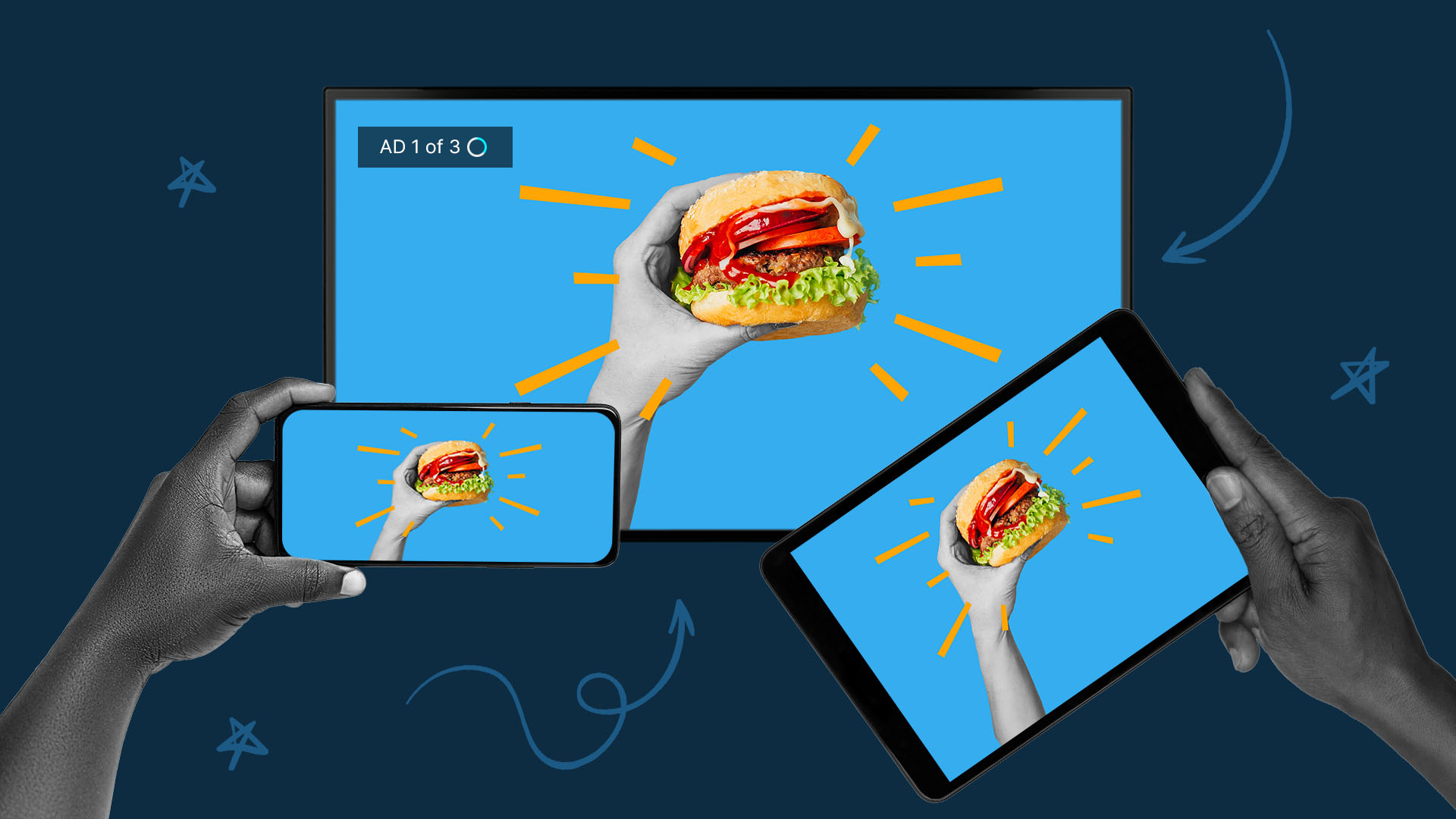Making the Most of Your End-of-Year Video Marketing Campaigns

We get it — the video marketing industry can be a lot. Between platforms, formats, video types, and more, it feels like brands have a million options, which can make the process pretty overwhelming.
As the end of the year approaches, many marketing teams are prepping for their most important season. According to CO—, a U.S. Chamber of Commerce resource, “November and December are big months for virtually every business, but for some merchants, this period can make or break their budget for the year. Some seasonal businesses expect to earn 70% of their annual revenue within just a few months.”
Since end-of-year campaigns clearly hold a lot of weight, it’s critical to ensure your video marketing strategies are as successful as possible. Let’s explore how to make the most of your digital video strategy throughout end-of-year marketing campaigns.
Why Is Video Marketing So Essential?
If you haven’t ventured into the video marketing world yet, you might be wondering what’s really going on over here. Why is everyone so eager to share more video content? (Because it works.) Is it really that effective? (Yes.) Is it really everywhere? (Also yes.)
From social media to digital billboards, video is everywhere — and it’s working. Brands aren’t increasing the amount of video content they share because they want to; they’re doing it to give customers what they want. With a combination of visuals and audio, videos help catch (and keep) your audience’s attention.
Remember how we talked about the end of the year being vital for businesses? Today, video can help out directly. As social and e-commerce continue to rise, brands can sell their products from the video content itself. On TikTok, for example, brands can implement shopping features that allow customers to purchase products from the video. (Hint: you can tell which videos are shoppable thanks to a pop up at the bottom of the screen, just above the caption.)
And as the time spent watching digital video continues to increase, you need to get your brand in front of this captive audience. According to Statista, users worldwide are spending an average of 17 hours per week consuming online video, which gives your brand countless opportunities to connect with them.
Video Marketing Formats To Keep in Mind
As marketing and its adjacent industries continue to grow, there are new ways to share your brand with the world via video. Before you finalize your end-of-year video marketing plans, let’s explore a few formats to keep in mind:
Social Media Video
Social media video ads might have been the first thing to pop into your head when you started reading this article — and for a good reason. One survey found that in 2022, the average US social media user spent 47 minutes watching videos on social media every day (and going by my screen time report, let’s just say that the median is probably … a lot higher).
Especially on social media, it’s essential to keep up with trends. Social media video marketing trends can help you create a relatable and relevant online presence, encouraging your audience to come back for more content consistently.
But it’s not enough to just post any video on social media. You’ll need several elements to make an impact, including the right social media video ad specs. If you post content with the wrong ad specs, it’s going to stick out on the platform — in a bad way — and make your audience keep scrolling. Instead, grab their attention with catchy copy, a good story, and engaging visuals that feel native to each platform.
You’ll also need an effective and flexible social media video strategy. Digital marketing changes often. (Seriously, something has probably definitely changed between when we wrote this and when you’re reading it.) So while you’ll want a strategy with best practices, the most important platforms, and key data, you’ll also need to keep it open to change. As new platforms and features arise, for example, you might need to adjust your resources to make room for a new type of content.
Whether you’re ramping up your TikTok marketing or adding the latest platform to your strategy, social media video content should be on your list as you finish up your end-of-year video marketing plans.
CTV and OTT Video Ads
Connected TV (CTV) or Over-the-Top (OTT) ads are another way you can use digital video to showcase your brand. According to Statista, the internet-connected TV penetration rate in the United States is around 88% in 2023.
Plus, the time spent watching CTV devices continues rising, increasing the opportunity for your brand to reach your target audience. According to eMarketer, US consumers will spend more than two hours per day watching videos on CTV devices in 2024.
Just like with social media, your ads need to be intentionally crafted for your audience, goals, and brand. Especially when it comes to CTV, you need high-quality video content to grab viewers’ attention. If they’re watching a show on a streaming service, lower quality ads would stick out (again, in a bad way) and cause viewers to tune out.
With the right CTV video ad specs and best practices, you can connect with your customers while they watch their favorite shows, movies, and other streaming content. Plus, CTV is creating new experiences, including music television, which allows you to air ads alongside more relevant content.
As you craft your end-of-year marketing campaigns for CTV and OTT, learn as much about your audience as possible. Even if you’re just starting out, you can find general information about user demographics for CTV and OTT platforms. While this is general information, you can still use these insights as a way to begin creating audience-specific content. Once you learn more about your consumers, you’ll be able to optimize your strategy and reach them more effectively.
Other Video Ad Options
There are a ton of other opportunities when it comes to video marketing. While we’d love to detail all of them, we’ve narrowed it down to three, so you don’t have to read a novel-length blog.
Out-of-Home
Have you seen those giant billboards with wild video visuals? (If not, you can check some examples out here.) While they’re great, you might not (probably don’t?) have the budget to create a whole 3D experience for Times Square.
But you don’t have to. There are out-of-home (OOH) video advertising opportunities for all budgets, including QR codes that lead to a video about your brand. No matter the size of your experience, you can intertwine your video and OOH advertising strategies.
In-Game Advertising
As in-game advertising grows, your brand can implement effective campaigns throughout your audience’s favorite apps, consoles, and more.
For example, Progressive is currently running an ad campaign on a mobile game, which features a quick animated video when the app launches. Whether you utilize a video ad during a break or integrate your brand into the game, there are plenty of ways to connect with users through in-game advertising.
Video Email Marketing
You can drive engagement in your email campaigns by adding videos throughout. With eye catching visuals, you can entertain and educate your audience, enticing them to explore your email more than they might otherwise.
Especially in your end-of-year campaigns, you can use videos to share exclusive content, deals that are only for your email subscribers, and timely information your audiences need to know.
Video Marketing Campaign Best Practices
Like we’ve said above, you can’t just make and post any video to create an effective campaign. Depending on the platform, audience, and goals, you’ll need to consider a number of variables to make your campaigns as successful as possible.
1. Test and Optimize
The best way to understand your performance is to track it. By monitoring your video marketing performance, you can understand which content makes the biggest impact.
To get started, you’ll need an effective video testing strategy. While A/B testing can help you gain insights, it only goes so far. Multivariate testing, on the other hand, allows your marketing team to dive deeper into the individual elements of your videos.
But having those insights isn’t enough — you’ve got to put them to use. Once you know which video styles, CTAs, and value propositions (just to name a few elements) resonate most with your audience, it’s time to optimize your campaigns.
Not sure where to start? Some brands are using TikTok as a testing ground to see how their videos land with consumers. Once they see how a video performs, brands can use this data to improve their success from the start on other platforms.
2. Share Fresh Creative To Avoid Ad Fatigue
As end-of-year and evergreen campaigns begin to overlap in the next couple of months, it’s essential to look at your assets not only individually but also how they work together.
There are some key differences between the two, including the different timelines. While evergreen campaigns can run for a couple of months without imposing ad fatigue, seasonal ads typically have a shorter lifespan. The top 25% of MNTN advertisers who achieve the highest ROAS and/or conversion rates run each of their seasonal creatives for ten days, on average.
By sharing fresh ad creative consistently — and “fresh” can mean a variety of things, from minor CTA and V.O. tweaks to new cuts of existing footage — you can ensure consumers are engaged with (even excited for) your ads throughout the holiday season.
3. Speak Directly to Your Audience
As personalization becomes more vital (and possible), brands need to include audience-based conversations in their marketing campaigns. This tells your customers you’re speaking directly to them — and that you’ve taken their interests, wants, and needs into consideration. For example, this strategy can ensure you aren’t speaking to your Pinterest audience the same way you speak to your CTV viewers. While both may be essential to your marketing strategy, the two groups expect drastically different experiences on these platforms.
This is also why purpose-built creative is such a great way to give your audience more of the content they want to see. For example, if you’re eager to answer consumer questions about how to use a product, you might want to share some functional marketing content. Video content isn’t always glamorous, and it doesn’t have to be — educational videos can help users understand and utilize your product more effectively.
4. Diversify Your Video Marketing Channels
As we’ve seen with previous digital video experiences, one channel simply isn’t enough anymore. Your audience watches content across multiple platforms and devices, so you need to advertise on multiple channels, too.
If you’re worried about not having enough video content to get started, you can always repurpose existing assets. Post-production editing can change language, CTAs, visuals, aspect ratios, and more to recreate content for a new platform.
Small changes can make a significant difference, especially when it comes to end-of-year marketing campaigns. By editing in a new voiceover and some holiday elements, for example, you can create an ad that appeals to your audience right before they start buying gifts. Or, you could add fireworks and other celebratory imagery if you want to catch people as they make their new year resolutions.
5. Maintain Your Branding Across Platforms
Once you’ve kicked off your omnichannel marketing strategy, you’ve got to keep that momentum going and maintain your branding across each channel. No matter where your audience is watching your ad, you want them to know that it’s your ad.
Plus, you want to make sure your brand avoids the bad digital ads phenomenon with effective branding and high-quality content.
The Reign of Digital Video All Year Long
While video marketing is essential all year long, many marketing teams are eager to make an extra push to grow their business as the year wraps up.
There’s no question: video will continue to rule our digital marketing strategies. By using performance channels, best practices, and purpose-driven content, your brand can make the most of these opportunities.
Do More with Video
Learn how we can help you produce more quality videos affordably and at scale.


